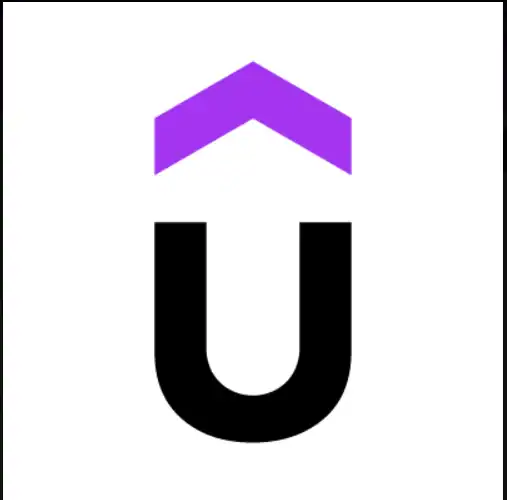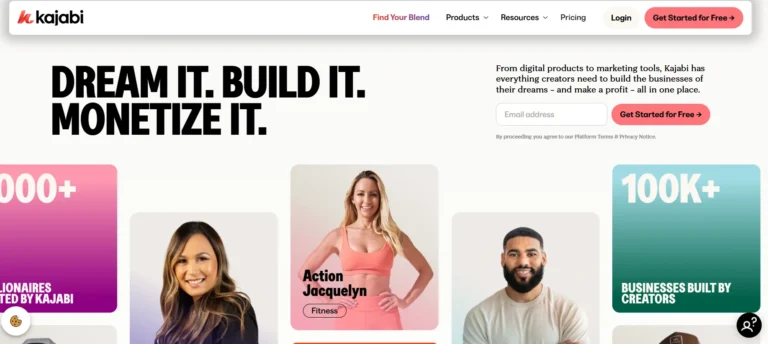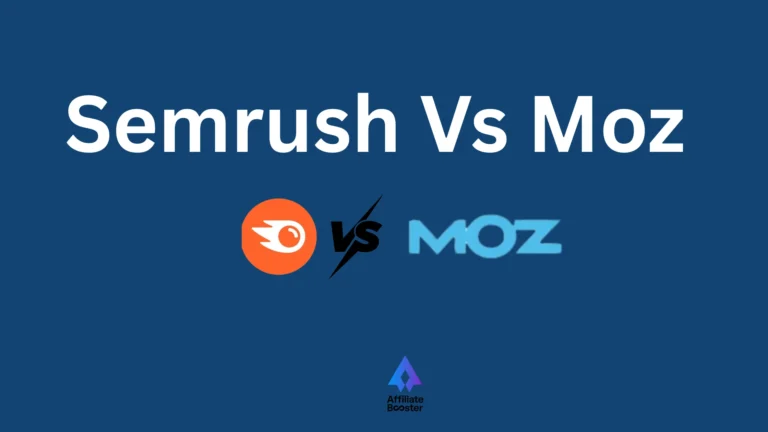Best For | Anyone looking to learn new skills at their own pace. Great for beginners and hobby learners. | Best for developers and tech pros who want deep, job-ready training. |
Pricing | One-time payment. Courses often start at $9.99 during sales. | Starts at $29/month. Pay monthly or yearly for full access. |
Features | Huge variety of topics |
|
Pros | Cheap during sales | Built for serious tech learning |
Cons | Quality can vary | Not for casual learning |
Online learning has changed how we build skills. Classrooms have moved to screens, but with so many platforms, choosing the right one isn’t easy.
Udemy vs Pluralsight is a common comparison. Both are trusted and teach real skills, but in different ways. I’ve used both Udemy for quick, one-off courses and Pluralsight for deeper, structured learning.
Sometimes you need a short course. Sometimes you need a full path. So which one fits best? Let’s break it down clearly, no buzzwords, just what matters. Let's Get In..
Main Key Differences Between Udemy Vs Pluralsight
- Udemy offers over 210,000 courses covering topics such as business, design, development, and personal growth.
- Pluralsight provides around 7,000 courses focused mainly on tech fields like programming, cybersecurity, cloud, and IT.
- Udemy uses a pay-per-course model with lifetime access, while Pluralsight offers subscription-based access to its entire library.
- Udemy allows any instructor to publish, which leads to mixed course quality, whereas Pluralsight works with vetted experts to maintain high standards.
Udemy Vs Pluralsight Platform Overviews
Overview of Udemy

Udemy is an online learning website that started in 2010 and is based in San Francisco. It has a large collection of over 210,000 video courses on many subjects like business, design, coding, marketing, and personal growth.
Anyone can teach on Udemy, so the platform has a wide mix of courses and styles. People can buy single courses, usually at low prices during sales, and keep access to them for life.
Udemy is a good choice for beginners or people who want to learn new skills in their own time without paying for a subscription.
Overview of Pluralsight

Pluralsight is a learning platform that started in 2004 and is based in Draper, Utah. It focuses on technology and is built for developers, IT workers, and teams.
It has about 7,000 courses made by experts in fields like software development, cybersecurity, cloud, and data. Pluralsight uses a subscription plan.
People can watch any course while their plan is active. It also gives hands-on labs, skill tests, and learning paths that help people grow in their tech careers.
Pluralsight works well for professionals who want to build strong skills for the workplace.
Udemy vs Pluralsight: Key Differences at a Glance
Course Catalog

Udemy gives you access to one of the biggest course libraries online. It has over 210,000 courses across many subjects.
You can learn tech skills like web development, data science, and cybersecurity. You can also explore creative topics like photography, music, cooking, and yoga.
Because anyone can upload a course, the quality is not the same in every class. Some are great, others are not. It feels more like a big marketplace where you need to look closely at reviews before you choose.
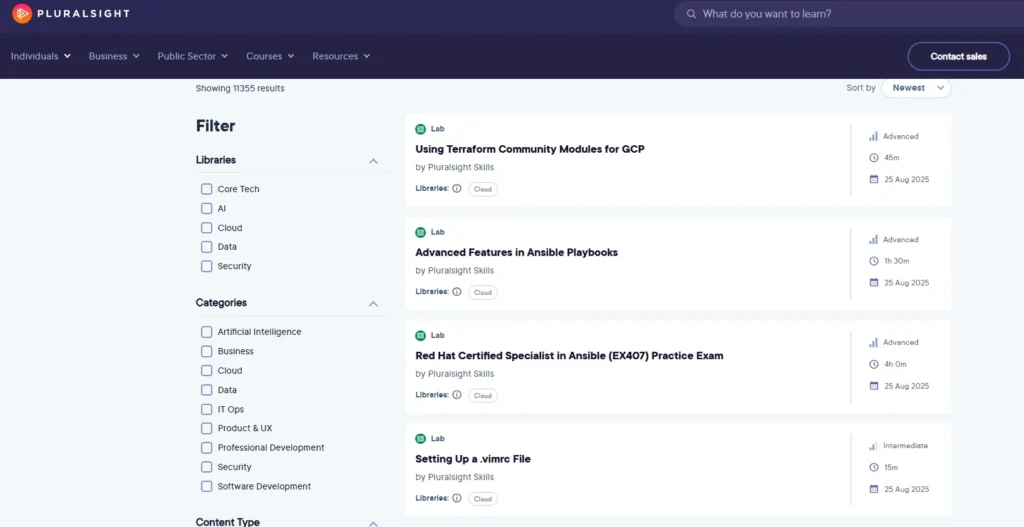
Pluralsight keeps things focused. It offers about 7,000 courses, all centered on technology and workplace skills. You will find content on software engineering, cloud platforms, data analytics, and IT operations.
The courses are made by experts with real experience in the field.
The size of the catalog is smaller than Udemy’s, but it’s built for tech learners who want to grow their skills in the industry.
Instructor Quality
On Udemy, anyone can create and publish a course. This means the platform has a very wide range of instructors from industry experts with years of experience to hobbyists who are just starting out.
As a result, the quality of courses can vary a lot. Some are well-structured, clear, and extremely valuable, while others may feel rushed, outdated, or lacking depth.
Because of this variety, students need to be careful when choosing. Reading ratings, reviews, and checking the instructor’s background is important to make sure you get the most value out of a course.
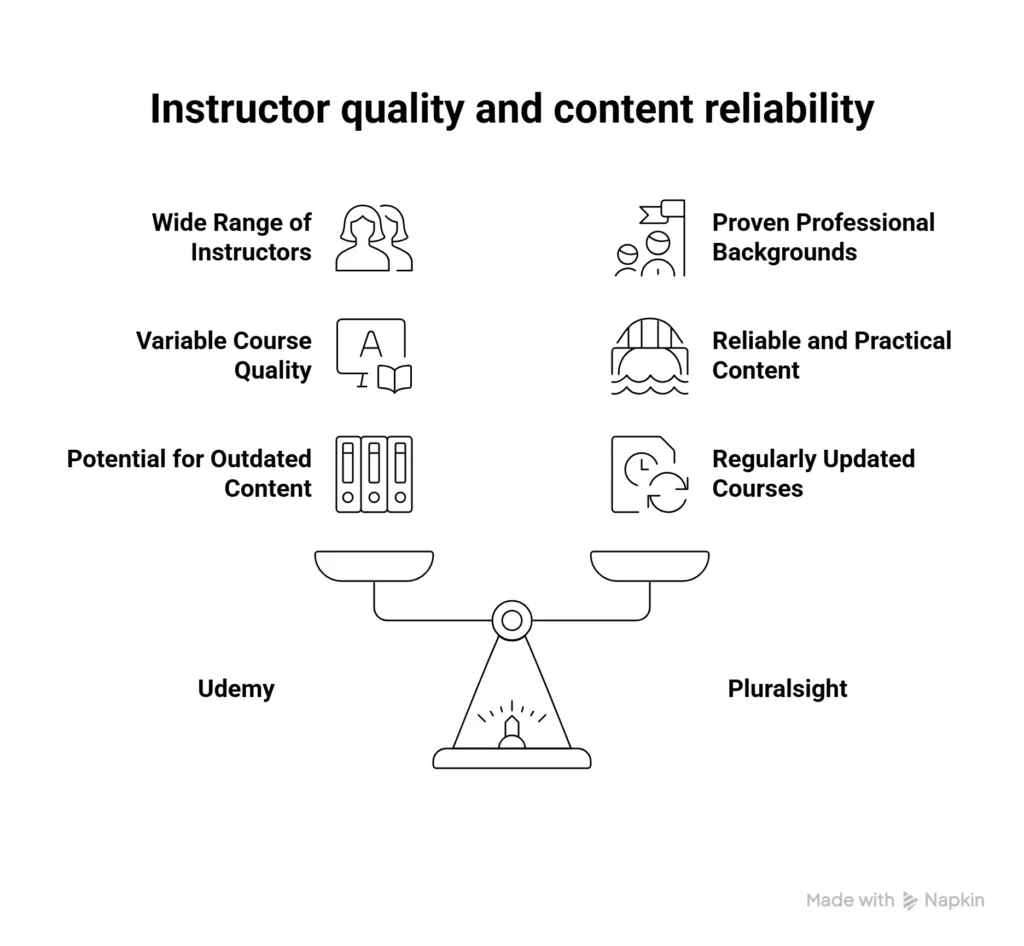
On Pluralsight, the process is more controlled. The platform only works with instructors who have proven professional backgrounds and strong experience in their fields.
These include software developers, IT specialists, engineers, and data experts who are already established in the industry. This approach ensures that the content is reliable, practical, and closely aligned with what is needed in real jobs.
In addition, Pluralsight regularly reviews and updates its courses to keep them relevant, especially in fast-changing areas like cloud computing, security, and software development. For learners who want consistent, professional-grade content, this makes Pluralsight a safer and stronger choice.
Learning Format
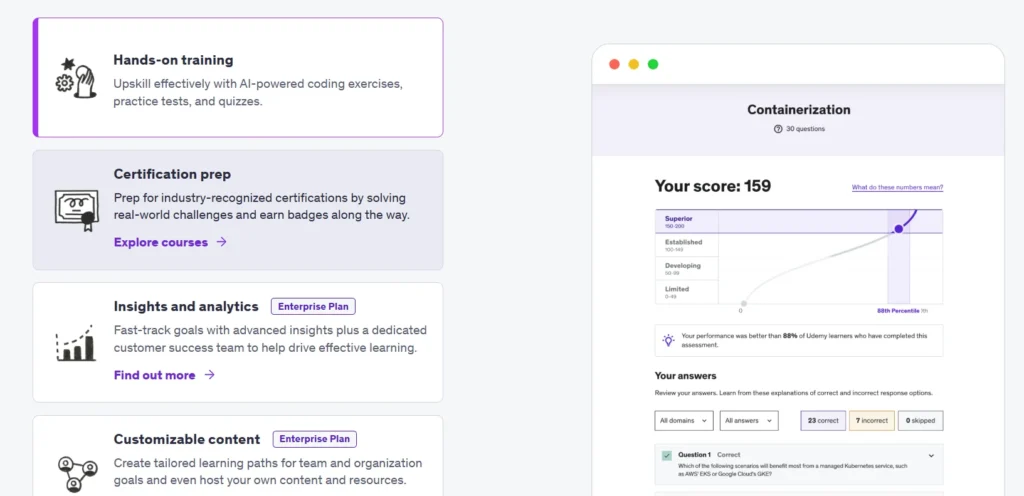
On Udemy, most courses follow a simple and familiar setup. They are built around pre-recorded video lessons that you can watch at your own pace.
Many courses also include short quizzes, assignments, or downloadable files such as PDFs and slides. Some instructors go the extra mile and add coding exercises, small projects, or case studies, but this is not guaranteed and depends on the teacher.
There is no fixed order or learning track to follow, so you can pick any course that interests you and move through it in your own way. This flexibility works well for learners who already know what topic they want to explore or who enjoy learning casually without strict structure.
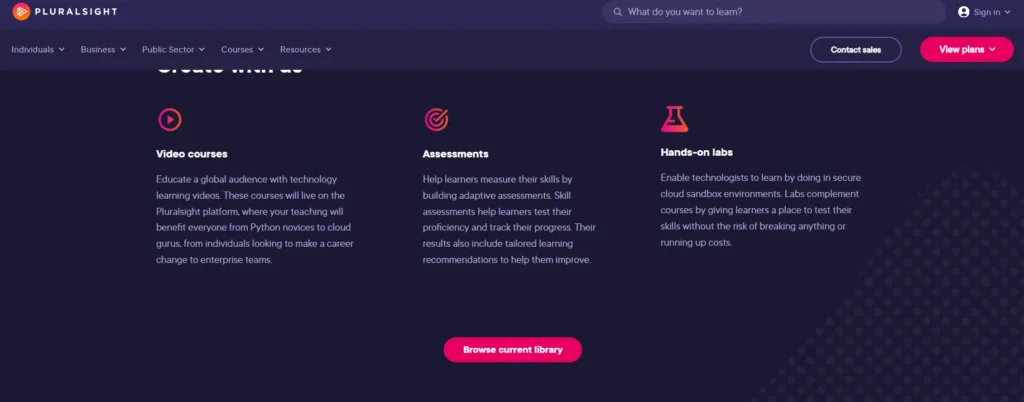
On Pluralsight, the learning experience is more guided and structured. Along with video lessons, you get access to hands-on coding labs, real-world projects, and knowledge checks that test your understanding.
The platform also offers curated learning paths, which are step-by-step sequences of courses designed to build a skill from the ground up. These paths are especially helpful for learners who want to progress from beginner to advanced or who are preparing for industry certifications like AWS, Azure, or CompTIA.
By combining theory with practice in live environments, Pluralsight helps learners apply knowledge directly, build confidence, and prepare for real job tasks. For professionals aiming to grow in their careers, this format feels closer to workplace training than casual learning.
Certifications
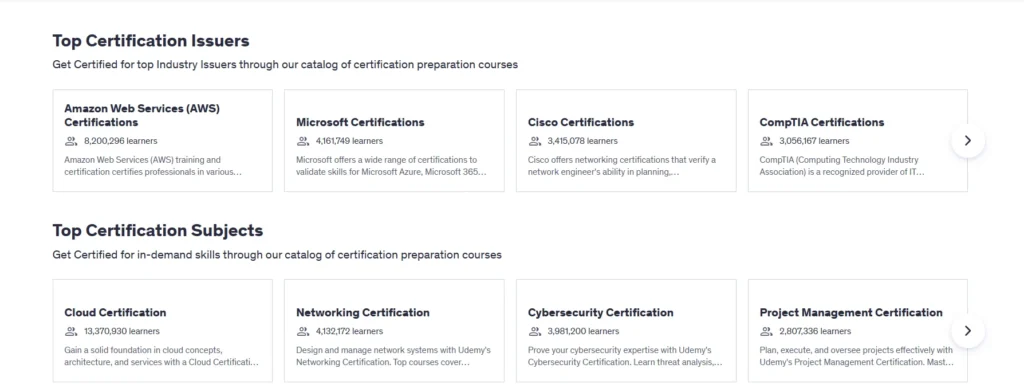
On Udemy, every course you complete gives you a certificate of completion. These certificates can be downloaded and shared on your resume, portfolio, or LinkedIn profile to showcase your effort and learning journey.
They are useful for demonstrating personal commitment and continuous learning, but they are not officially recognized by large tech companies or certification bodies.
Since Udemy is open to all instructors, the certificates reflect that you finished a course rather than proving mastery of an industry-standard skill. They are still valuable for building confidence and showing initiative, especially when learning soft skills, creative topics, or general knowledge.

On Pluralsight, certificates carry more weight because the platform is highly regarded in the tech industry. When you complete a course or an entire learning path, you receive a certificate that can be shared with employers and added to your professional profile.
Beyond that, many Pluralsight courses are designed to directly prepare learners for official certifications from organizations like Microsoft, Google Cloud, AWS, and Cisco.
This makes them more relevant for career growth, as employers often look for candidates who hold or are working toward these recognized credentials.
Pluralsight’s structured paths and labs also give you practical skills that help when taking these certification exams, making it not just a learning certificate but a step closer to advancing your career in technology.
AI and Personalization
On Udemy, recommendations are driven by browsing and purchase history. The platform suggests courses based on what you’ve already looked at or completed, and in business plans, it offers curated suggestions tied to job roles. Instructors can also add quizzes or assignments that enhance the learning experience.
These features give a level of personalization, but since Udemy’s audience is so broad, the recommendations feel general rather than specialized.
On Pluralsight, personalization is taken to another level with its AI assistant called Iris. Iris analyzes your current skills through assessments and then builds a path that fits both your present knowledge and your future career goals.
This is particularly useful for learners in tech, where structured growth matters. Whether you want to become a cloud engineer, security analyst, or software developer, the AI maps out a clear, skill-based route to help you close gaps and move toward your goal faster.
Content Updates
On Udemy, course updates depend entirely on the instructor. Some popular instructors update lessons regularly to match new tools or methods, but many courses stay unchanged for years.
In fast-changing fields like programming or data science, outdated content can become a problem. For this reason, learners are encouraged to check course reviews, update notes, and the last publication date before enrolling.
On Pluralsight, content updates are handled systematically. The platform actively tracks changes in technology and updates its courses to reflect industry trends.
New frameworks, tools, and certifications are often added quickly, which is crucial for tech learners. This approach ensures that what you learn remains relevant, accurate, and applicable in real-world jobs.
Pricing Comparison Udemy Vs Pluralsight
Udemy Pricing
Udemy gives learners two options pay per course or choose a subscription plan.
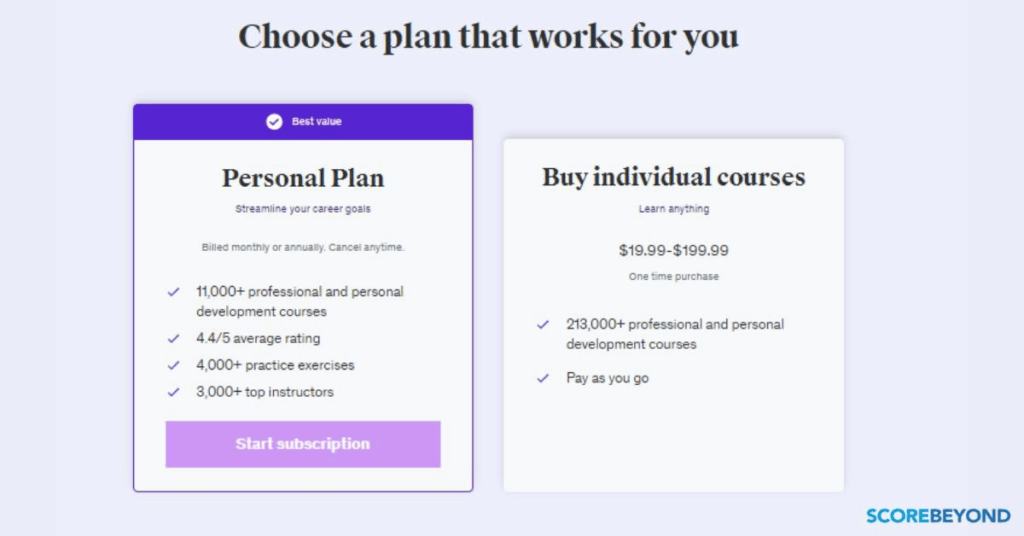
Pay-Per-Course
- Most courses cost between $19.99 and $199.99.
- New users often get discounts, bringing courses down to $9.99–$14.99.
- Once you buy a course, you keep it forever (lifetime access).
Personal Plan
- Subscription for individuals.
- Around $35 per month (billed monthly or yearly).
- Unlimited access to thousands of top courses.
Team Plan
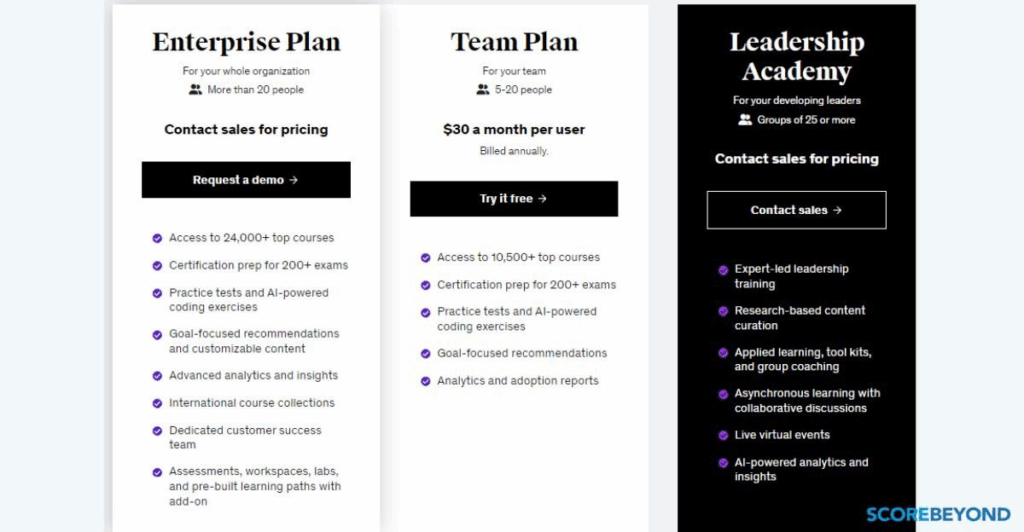
- For small teams (5–20 users).
- $30 per user per month (billed annually).
- Access to 10,500+ curated courses plus basic analytics.
Enterprise Plan
- For larger companies (21+ users).
- Custom pricing based on needs.
- Includes advanced analytics, integrations, multi-language content, and a dedicated success team.
Pluralsight Pricing
Pluralsight works only on a subscription model. You pay monthly or yearly for full access.
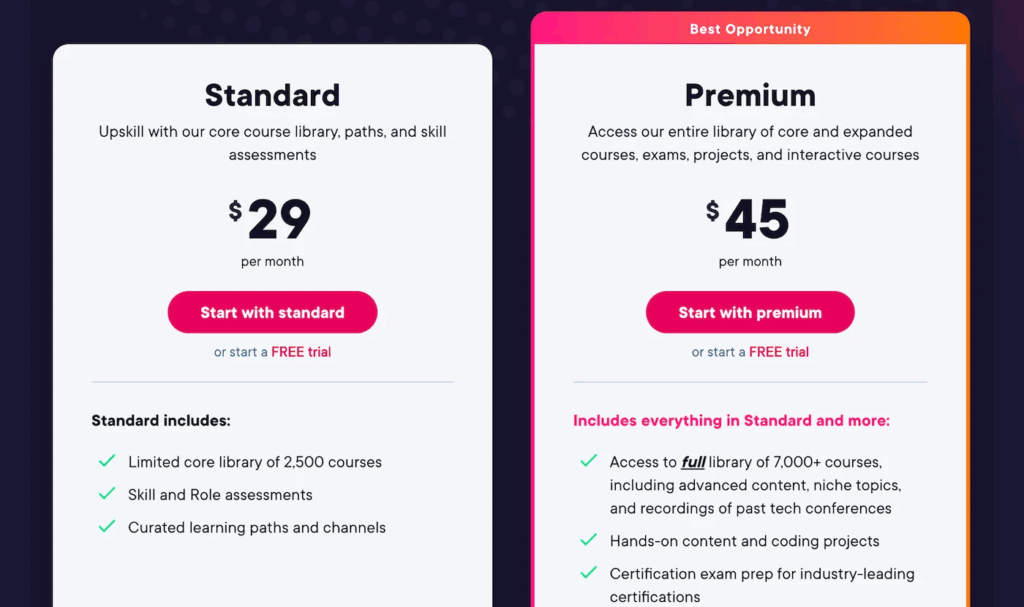
Individual Plans (monthly or yearly):
- Standard: $29/month or $299/year.
- Premium: $45/month or $449/year. Includes hands-on projects, certification prep, and labs.
- AI+ / Cloud+ / Data+: Also priced at $29/month (Standard) or $45/month (Premium), tailored to specific fields.
Team Plans (per user, billed yearly):
- Starter: $399 per user per year.
- Professional: $579 per user per year. Adds advanced analytics and reporting.
- Enterprise: $779 per user per year. Full set of tools, including skill tracking, role-based insights, and custom learning paths.
Pros and Cons of Both Platforms
Udemy Pros and Cons
Pros
- Very affordable, with big discounts for new users
- Huge variety of courses (tech and non-tech)
- Pay once, keep the course for life
- Easy to use on web and mobile
Cons
- Course quality can vary a lot
- No structured learning paths
- Limited hands-on practice
- Certificates not industry-recognized
Pluralsight Pros and Cons
Pros
- High-quality courses from industry experts
- Structured learning paths with clear steps
- Hands-on labs, projects, and skill tests
- Certificates valued in the tech industry
- Strong tools for team and enterprise learning
Cons
- Subscription only, no lifetime access
- More expensive than Udemy
- Focuses only on tech subjects
- Can feel complex for beginners
Udemy vs Pluralsight 2025 – Which Should You Choose?
- Pick Udemy if:
- You want the lowest entry price, prefer pay-per-course, and learn best with flexible, video-rich content across a huge variety of subjects—especially outside of tech.
- You value lifetime access and like to learn at your own pace.
- Pick Pluralsight if:
- You’re a developer, IT pro, or tech team that values deep, structured training, hands-on labs, and courses aligned to real certifications and job-ready skills.
- You want your learning recognized by employers and need sophisticated learning analytics.
Testimonials of Udemy & Pluralsight
Udemy

Pluralsight
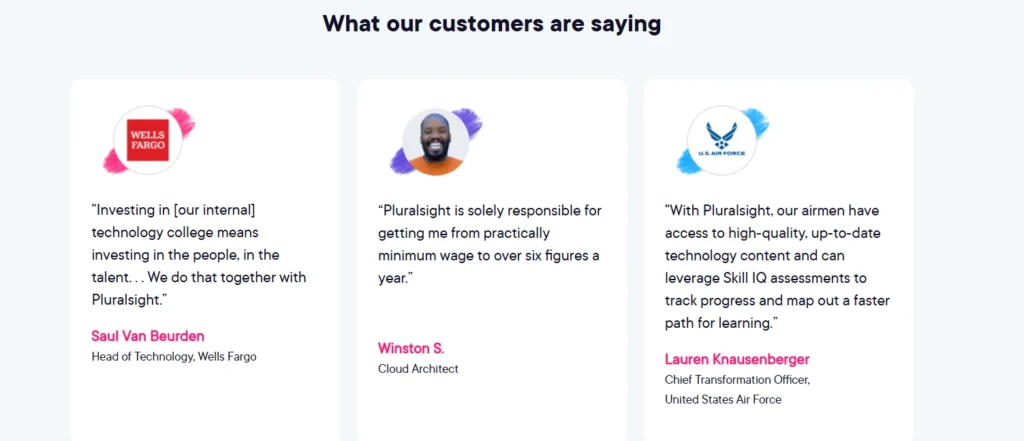
FAQs About Udemy Vs Pluralsight
❓Which platform is better for learning tech skills?
Udemy has more topics and one-time course purchases at low prices. Pluralsight is designed for tech and gives you guided paths, labs, and expert-led training that prepare you for real jobs.
❓Which option costs less?
Udemy is usually cheaper because of frequent sales. You pay once and keep the course forever. Pluralsight is more expensive but gives unlimited access to all its tech courses while your subscription is active.
❓Can Udemy replace books or formal training?
For some subjects, yes. Udemy offers quick access to a wide range of topics, and video lessons often update faster than books. But course quality can differ. Pluralsight is closer to professional training, with updated, structured content made for the workplace.
❓Can I try Udemy or Pluralsight for free?
Udemy often gives free coupons for certain courses and big discounts for new users. Pluralsight offers a free trial (usually 10 days or 200 minutes) so you can explore before paying.
❓Are the certificates from Udemy or Pluralsight useful?
Udemy gives certificates of completion, which are good for showing personal growth but not industry-recognized. Pluralsight certificates carry more weight in tech because of its partnerships and alignment with official certifications.
Quicklinks:
- Kajabi Vs Thinkific : Which Platform Is Best To Create Courses?
- Helium 10 Vs Jungle Scout: Which Helps FBA Sellers Most?
- Semrush Vs Moz : Which SEO Tool Is Best ?
- Udemy Coupon Codes & Discount
- Pluralsight Coupon Codes & Discount
Final Verdict: Udemy vs Pluralsight
Udemy and Pluralsight both bring value, but in different ways. Udemy is best for affordable and flexible learning across a wide range of subjects, giving you lifetime access to the courses you buy.
Pluralsight is built for tech professionals and learners who want career growth, offering structured paths, labs, and expert-led training.
The right choice depends on your goal choose Udemy for casual skills or exploring new areas, and go with Pluralsight if you want focused, job-ready learning in technology.
Both platforms can help you grow, it just depends on how and what you want to learn.
